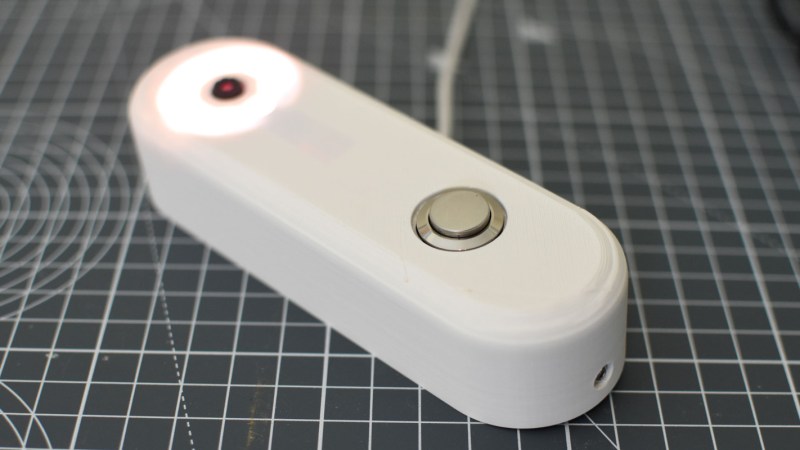As handy as having a smart doorbell is, with its ability to remotely see who’s at the front door from anywhere with an Internet connection, the off-the-shelf units are not typically known for keeping user privacy as a top priority. Even if their cloud storage systems were perfectly secure (which is not a wise assumption to make) they have been known to give governmental agencies and police free reign to view the videos whenever they like. Unfortunately if you take privacy seriously, you might need to implement your own smart doorbell yourself.
The project uses an ESP32-CAM board as the doorbell’s core, paired with a momentary push button and all housed inside a 3D-printed enclosure. [Tristam] provides a step-by-step guide, including printing the enclosure, configuring the ESP32-CAM to work with the popular open-source home automation system ESPHome, handling doorbell notifications automatically, and wiring the components. There are plenty of other optional components that can be added to this system as well, including things like LED lighting for better nighttime imaging.
[Tristam] isn’t much of a fan of having his home automation connected to the Internet, so the device eschews wireless connections and batteries in favor of a ten-meter USB cable connected to it from a remote machine. As far as privacy goes, this is probably the best of all worlds as long as your home network isn’t doing anything crazy like exposing ports to the broader Internet. It also doesn’t need to be set up to continuously stream video either; this implementation only takes a snapshot when the doorbell button is actually pressed. Of course, with a few upgrades to the ESP circuitry it is certainly possible to use these chips to capture video if you prefer.
Thanks to [JohnU] for the tip!
















Honest question: if its a doorbell cam, what would the privacy issues be? It not like its in your bedroom.
Your comings and goings, and that of your neighbours; potentially your (absence of) car which can suggest you’re out. There was a case recently in the UK where someone was sued because their Ring doorbell was capturing video every time their neighbours came or went.
Having access to someone’s doorbell cam can tell you when a person leaves the house or comes back home, if there’s a package waiting in front of their house, who’s visiting, and often will give a view of cars in their driveway. If you were a burglary afficionado, a set of feeds geolocated to a neighborhood would make for easy targeting.
It is just best not to ‘share’ :) . I am also a fan of ‘not’ connecting any ‘home network’ stuff to the internet. Why I have two networks in place. One just for the internet access. And everything else is on the private home network.
My problem always comes down to where to get the power for devices scattered around the property. Everything is “o’ this would be neat” … but where do I run power wires :) . Battery is not the solution in most cases.
POE, 2 birds one stone. (More and more wifi devices I do not understand for anything literally nailed down) Use direct burial or bury cheap cable inside PEX or something.
There is a Nice dystopian sci-fi book written by Koen Martens in his Isolated Futures series on amazon about this problem: DingDong by Zhumee. Incidentally I designed the cover for his books…
Probably not the best place for my question, but is there such smart doorbell that has RFID reader and relay for door opening?
All of the “popular” smart doorbell has only camera…
Ubiquiti has one: camera, touchscreen (for pin code), and NFC all in one device.
I like the idea, but wihtout the “intercom” option it’s not very smart to me. If i am at home i can just open the door to see who’s there. If i am not at home a picture of who’s ringing doesn’t help me much.
It’s a “smarter” option, “smart” means (normaly) that there is a cloud server (from supplier) needed and you (as user) depends on that.
While I also have reservations about having the home automation accessible from the internet, having an exposed USB cable seems way worse IMHO, and a good way to get hacked.